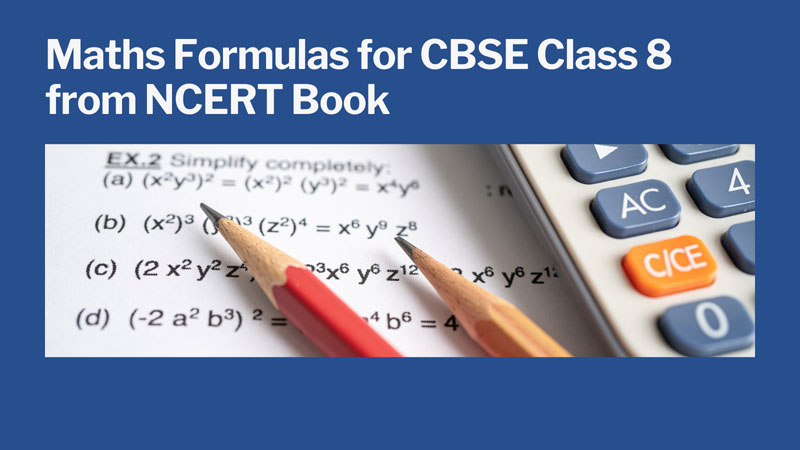Rational Numbers
Properties of Rational Numbers
1. Closure: a/b + c/d and a/b × c/d are also rational numbers.
2. Commutative: a/b + c/d = c/d + a/b and a/b × c/d = c/d × a/b.
3. Associative: (a/b + c/d) + e/f = a/b + (c/d + e/f) and (a/b × c/d) × e/f = a/b × (c/d × e/f).
4. Distributive: a/b × (c/d + e/f) = (a/b × c/d) + (a/b × e/f).

Linear Equations in One Variable
Solving Linear Equations
Isolate the variable on one side of the equation.
Example:
1. 2x + 3 = 7
2x = 7 – 3
2x = 4
x = 4 / 2
x = 2
Understanding Quadrilaterals
Sum of Angles of a Quadrilateral
Sum of the angles in a quadrilateral is always 360 degrees.
Properties of Parallelograms
1. Opposite sides are equal.
2. Opposite angles are equal.
3. Diagonals bisect each other.
4. Consecutive angles are supplementary.
Practical Geometry
Construction of Quadrilaterals
Using a ruler and compass to construct quadrilaterals given certain conditions (e.g., sides, angles).
Data Handling
Mean
Mean = Sum of observations / Number of observations
Example:
Data set: 4, 8, 6, 5, 3
Sum = 26
Count = 5
Mean = 26 / 5 = 5.2
Median
Middle value in an ordered data set.
Example:
Data set: 3, 5, 6, 8, 9
Median = 6
Mode
Value that occurs most frequently.
Example:
Data set: 4, 4, 5, 6, 6, 6, 7
Mode = 6
Range
Range = Maximum value – Minimum value
Example:
Data set: 3, 5, 6, 8, 9
Range = 9 – 3 = 6
Squares and Square Roots
Square of a Number
Square of n = n × n
Example:
Square of 4 = 4 × 4 = 16
Square Root of a Number
Square root of n is a number which, when multiplied by itself, gives n.
Example:
Square root of 16 = 4
Cubes and Cube Roots
Cube of a Number
Cube of n = n × n × n
Example:
Cube of 3 = 3 × 3 × 3 = 27
Cube Root of a Number
Cube root of n is a number which, when multiplied by itself three times, gives n.
Example:
Cube root of 27 = 3
Comparing Quantities
Percentage
Percentage = (Part / Whole) × 100
Profit and Loss
Profit = Selling Price – Cost Price
Loss = Cost Price – Selling Price
Simple Interest
Simple Interest = (Principal × Rate × Time) / 100
Algebraic Expressions and Identities
Standard Identities
1. (a + b)² = a² + 2ab + b²
2. (a – b)² = a² – 2ab + b²
3. (a + b)(a – b) = a² – b²
Mensuration
Surface Area of a Cube
Surface Area = 6 × (Side)²
Surface Area of a Cuboid
Surface Area = 2(lb + bh + hl)
Surface Area of a Cylinder
Surface Area = 2πr(h + r)
Volume of a Cube
Volume = (Side)³
Volume of a Cuboid
Volume = l × b × h
Volume of a Cylinder
Volume = πr²h
Exponents and Powers
Multiplying Powers with the Same Base
aᵐ × aⁿ = aᵐ⁺ⁿ
Dividing Powers with the Same Base
aᵐ / aⁿ = aᵐ⁻ⁿ
Power of a Power
(aᵐ)ⁿ = aᵐ×ⁿ
Multiplying Powers with the Same Exponent
aᵐ × bᵐ = (a × b)ᵐ
Dividing Powers with the Same Exponent
aᵐ / bᵐ = (a / b)ᵐ
Negative Exponents
a⁻ᵐ = 1 / aᵐ
Direct and Inverse Proportions
Direct Proportion
Two quantities a and b are in direct proportion if a/b = k (constant).
Inverse Proportion
Two quantities a and b are in inverse proportion if a × b = k (constant).
Factorisation
Factorising by Common Factors
Extract common factors from terms.
Factorising Trinomials
Express as product of two binomials.
Factorising Using Identities
Use standard identities to factorise expressions.
Introduction to Graphs
Coordinate System
A system for plotting points using ordered pairs (x, y).
Types of Graphs
1. Line Graphs
2. Bar Graphs
3. Pie Charts
Playing with Numbers
Divisibility Rules
Rules to check if a number is divisible by another without actual division.
Prime Factorisation
Expressing a number as a product of its prime factors.